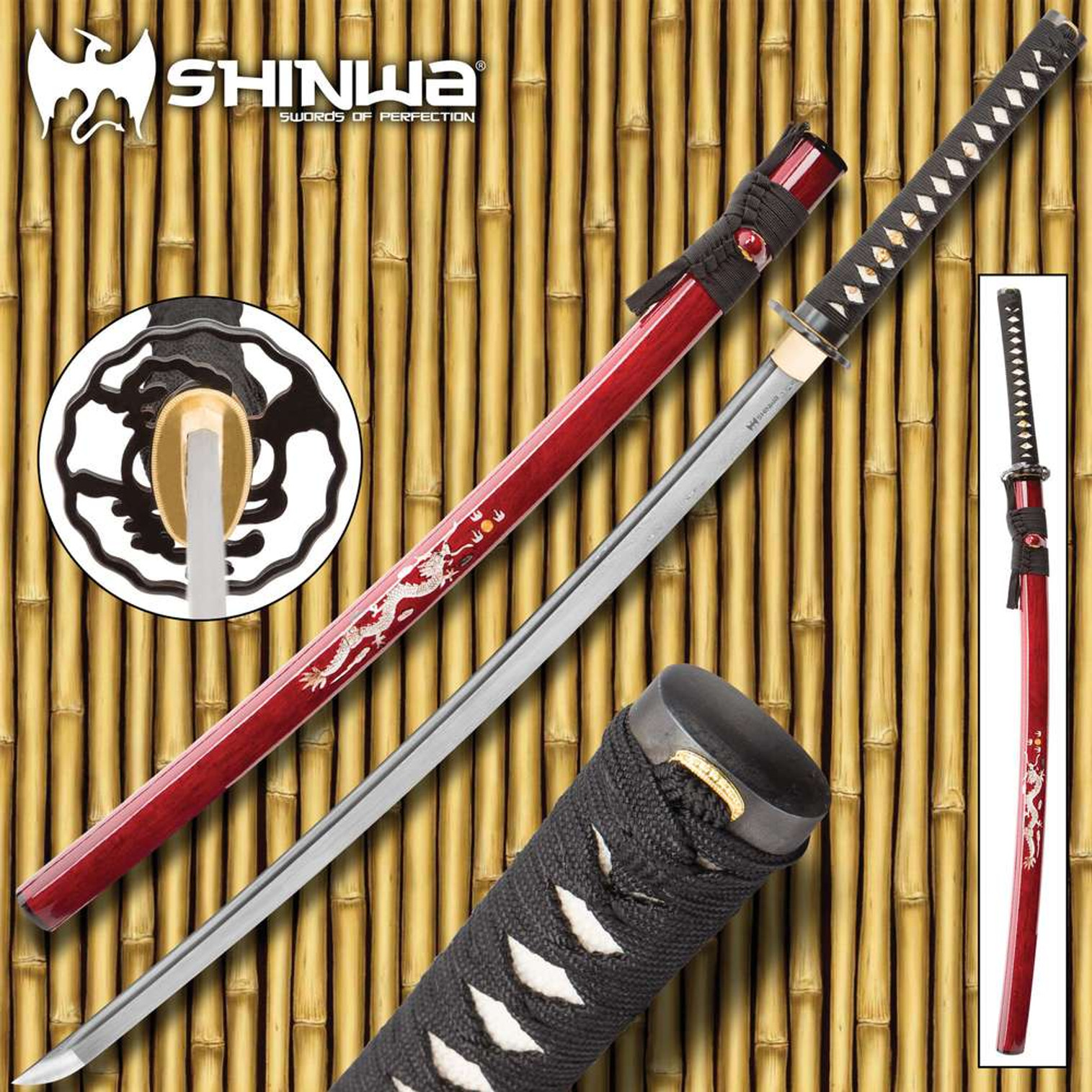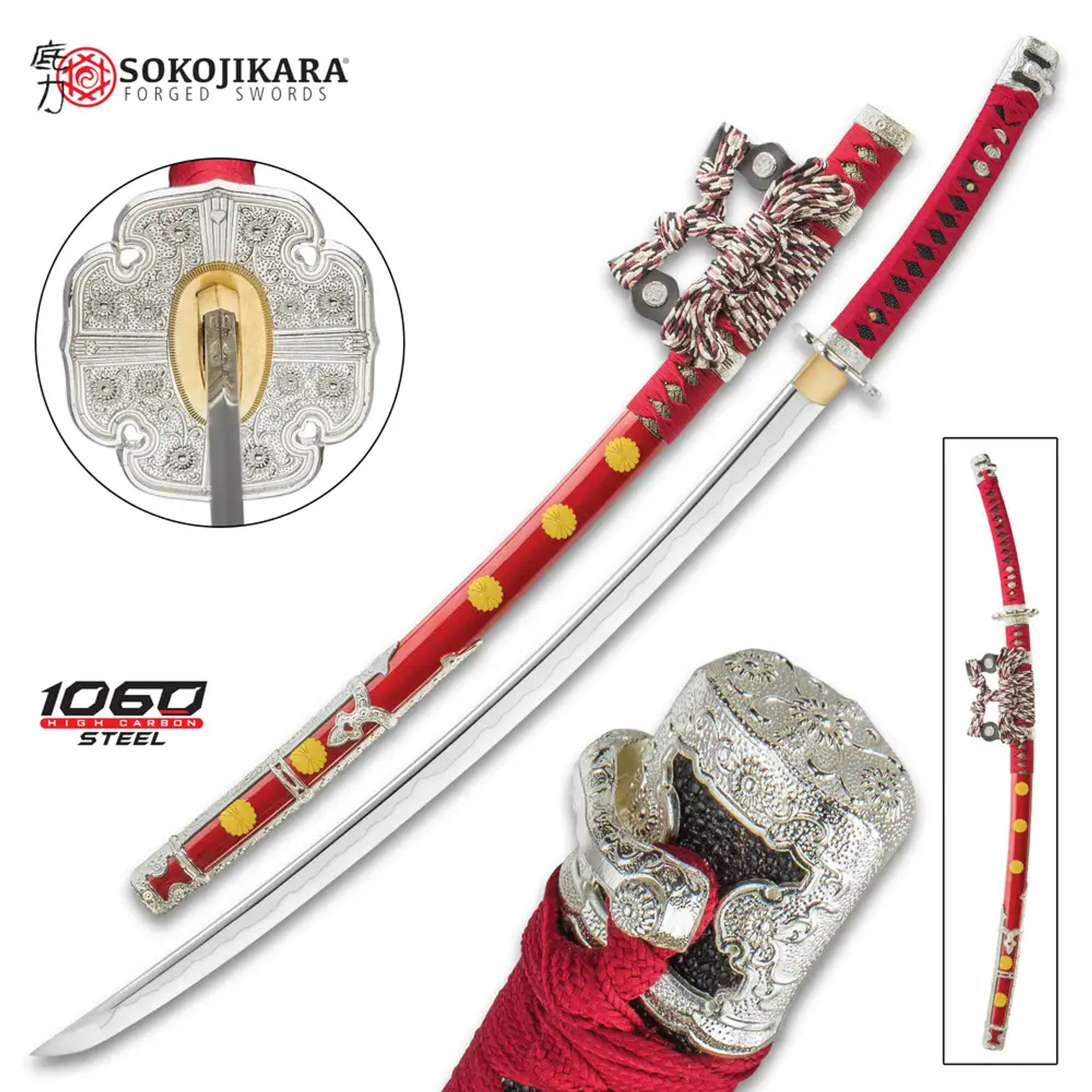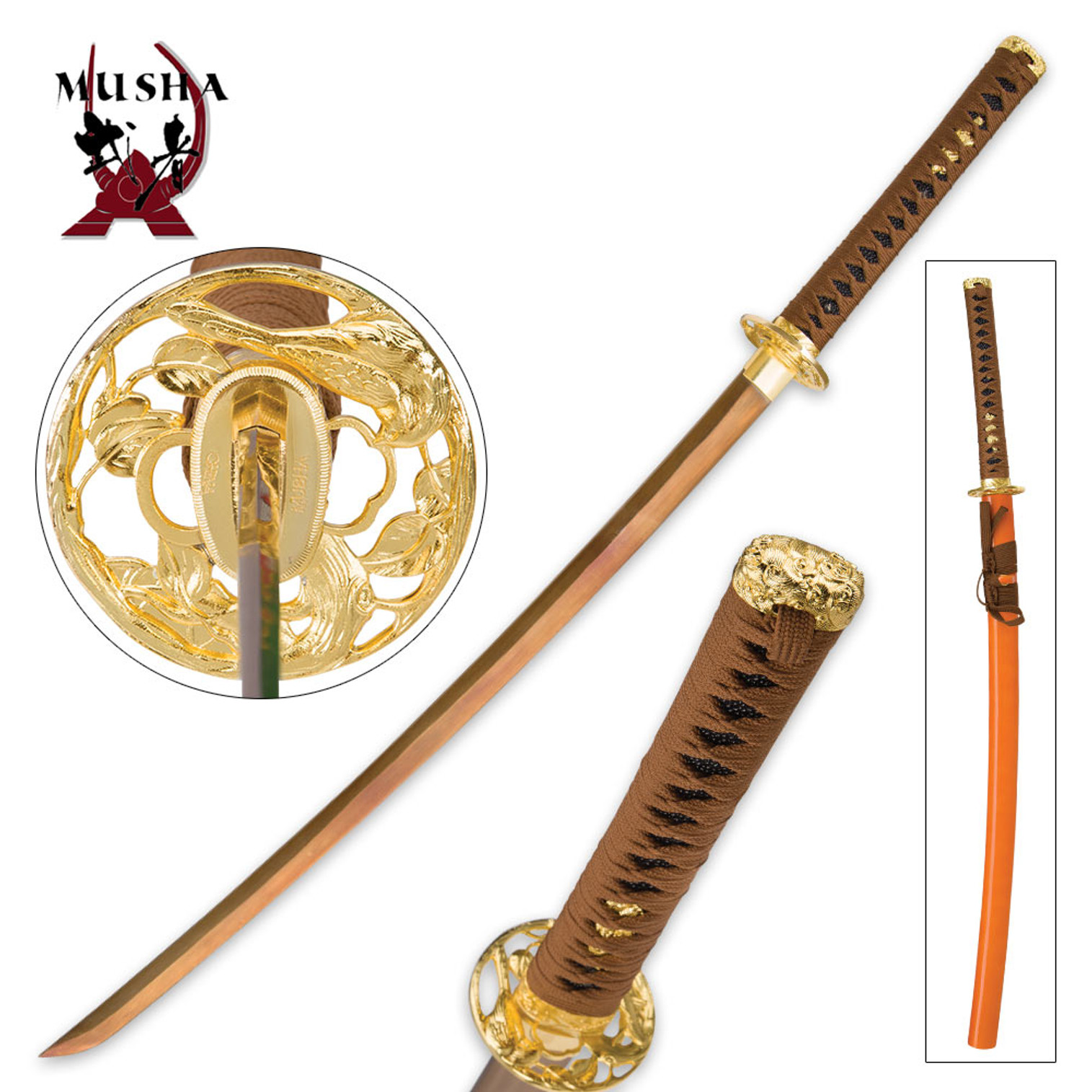A wise, still vibrant elder in the ancient tribe of Japanese swordcraft
Shinwa's "Genesis" Tachi breathes new life into an ancient Japanese sword that predates the legendary katana by centuries. Though little known outside niche sword enthusiast circles, the "tachi" is one of Japan's great ancestral swords - a pivotal foundation stone on which Japan's unrivaled swordcraft tradition is built, and a direct predecessor to its decidedly more famous descendant, the ubiquitous katana. But make no mistake - the tachi is no mere "katana prototype," and the Genesis is no exception. Like all tachi, the Genesis boasts form and function all its own - distinctive appointments, a unique look and feel and real-world combat capability that keeps pace with and often bests that of any katana. It should come as no surprise - after all, the elder tachi was slaying foes by the thousands and proving itself on the battlefield centuries before the first katana was even a twinkle in a swordsmith's eye. And though its profile, dimensions and overall aesthetic configuration are largely faithful to history, some of the Genesis's key features buck tradition in favor of a more inventive approach, tailored to today's serious collector swordsman. A prime example: the breathtaking, ever-formidable Damascus steel blade.
A match made in swordcraft heaven
Pairing Damascus steel with the tachi seems only natural, as both claim rich histories that stretch back more than a millennium. Unparalleled and positively bewitching, the Genesis's hand forged Damascus blade is a raging steel river through which thousands of distinct, contrasting lines flow. The lines twist, writhe, ripple and whirl as if swept up in some unseen current, forming captivating, near-hypnotic patterns across the surface of the blade. But this striking figure is more than just skin-deep, as each line represents a distinct layer of steel that forms the underlying fabric - nay, the very heart and soul - of the Genesis blade. To put it plainly, the blade's spectacular patterning is the natural result of the ingenious, time-honored hand-forging technique utilized in its construction.
Shinwa Swordcraft 101: Intro to Hand Forging a "Genesis" Blade
One of Shinwa's master swordsmiths fires a stack of steel strips - each a different alloy - in a white-hot forge until the metal glows cherry red. He then removes the stack and hammers it until it’s around half as thick as the original. Then he folds the metal onto itself lengthwise and hammers each half together. The process is meticulously repeated until the desired layering effect is achieved, at which point a final quenching strengthens the resulting blade blank and an acid etching highlights vivid contrasts in the layers. And the slow, laborious process itself it just the beginning! To achieve sufficiently dramatic contrasts, Shinwa’s master smiths must expertly select an appropriate combination of steel alloys of varying color, luminescence and other visual qualities. For the sake of strength, resilience and countless additional blade factors, the smiths must also must consider each alloy’s distinct melting point, proper stacking order, forge temperature and myriad other variables. Simply put, an unbelievable quantity of blood, sweat and tears goes into every Genesis blade, but lay eyes on it just once - or, better still, experience it in action - and you’ll know it was well worth the trouble. And like a steel snowflake or fingerprint, the patterning on no two Genesis blades is exactly alike.
Performance worthy of such incredible beauty
The tachi blade's sleek, gracefully curved profile and ideal weight distribution are essentially identical to that of the famed katana. Or to state it in the correct historical order - the katana blade largely mimics the tachi blade. Accordingly, the Genesis blade boasts the same extraordinary slashing and penetrating power for which the katana - and Japanese bladecraft as a whole - has so long been revered. The Genesis cuts cleanly and effortlessly through rolled tatami mats and thick bamboo, retaining its diligently honed, razor sharp edge through traditional tameshigiri and other challenging cutting trials. While the katana-esque blade is undoubtedly familiar - easily recognized by anyone who's ever seen a movie featuring a samurai or ninja character; elsewhere the Genesis diverges substantially from pop culture’s katana-centric "samurai sword" image, taking on an especially regal, ornately adorned flair befitting the tachi’s noble history.
How's it hanging?
While both the katana and tachi were carried by samurai and other members of Japan’s ancient noble and warrior classes, the way the two familial swords were carried (while sheathed) is perhaps their most prominent distinction. Whereas the katana was traditionally carried with cutting edge facing up - typically slipped inside a waistband; nobles and warriors bore the tachi “cavalry style” - hanging from the belt, edge facing down. It may seem a minor distinction, but it made all the difference in the world to mounted samurai. The Genesis’s hand lacquered - and undeniably eye-catching - hardwood saya retains the traditional “ashi,” or “hangers,” that connect the saya/sword ensemble to the bearer’s belt. The Genesis’s ashi are crafted from handsome genuine leather, accented with braided cord and regal metal leaf insignia bathed in a rich antiqued patina. Binding the leather ashi to the saya are two equally impressive “obi-tori," cast metal bands decorated with delicate, superbly detailed floral reliefs. Elegant braided ito encircles the saya beneath the hanging hardware, extending seamlessly past the classic cast metal crane tsuba and onto the tsuka.
Historical sword built to last well into future
No matter your previous sword experience, the Shinwa’s distinctive Genesis Tachi is a must-have treasure - the perfect fusion of history, visual splendor and functionality. For avid collectors, the Genesis adds an indispensable piece to your mosaic of the world’s greatest swords; without it, your real-world “chronicle of swordcraft history” is missing a vital chapter. But the Genesis is so much more than a relic. Even if you’re a first-time sword buyer or have no interest in history, the Genesis is still a fantastic way to start your collection on an undisputedly unique note that’s sure to draw attention, admiration, as well as spark curiosity and plenty of lively conversation from onlookers. No matter how you intend to enjoy it, at this unheard-of value, there’s no reason to deny yourself this rare opportunity to own an equally rare sword. And with proper care, you can pass it down for your children, grandchildren or even great-grandchildren to enjoy, as well! Shinwa’s heirloom-quality Genesis Tachi is built to be cherished generation after generation - your legacy preserved in hand forged Damascus steel!
- Get in touch with your swordcraft roots - sublime 21st century example of ancient Japanese sword with origins around 800 A.D.
- Full tang 28" Damascus steel blade - hand forged by master swordsmiths using time-tested technique as ancient as tachi itself
- Museum quality hand craftsmanship, but this is no mere museum piece - blade boasts serious, real-world cutting clout; sleek, gracefully curved profile mirrors that of katana's
- Flawlessly cast kashira, fuchi accented with delicate, beautiful reliefs; cast metal tsuba features classic crane design
- Hardwood tsuka wrapped in traditional braided ito; extends beyond tsuka onto saya; vibrant sparkling accents offset ito
- Hand-lacquered saya every bit as impressive as the sword it protects - traditional genuine leather cavalry hanging hardware, aka ashi and obi tori; cast insignia accents; elaborate braided sageo
- Overall length: 39 1/2" - ultimate traditional Japanese samurai sword; unstoppable in battle yet not too large to impede movement
 Sales@herooutdoors.com
Sales@herooutdoors.com
 USD
USD











